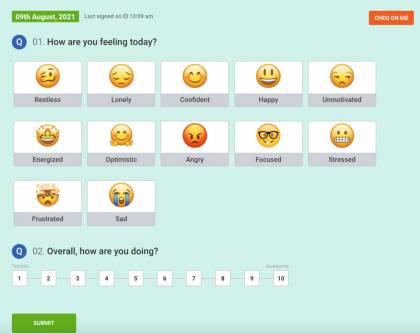- Name
- Jill Rosen
- jrosen@jhu.edu
- Office phone
- 443-997-9906
- Cell phone
- 443-547-8805
Two Johns Hopkins University researchers who study classroom stress and the emotional well-being of students and teachers have released an app that allows teachers to get daily reports about how their students are feeling.
Though the tool wasn't created for the pandemic, it certainly has come in handy over the last year as educators struggle to keep tabs on students, especially if they're teaching remotely.

Researchers know students will be anxious this year as schools struggle with the Delta variant.
"When they come back, it will be a new normal they don't know what's going to happen," said co-creator Lieny Jeon, associate professor in the university's School of Education. "Some students will be very nervous or anxious, and teachers may be too because they don't know what to expect for students. This app could provide a platform for both students and teachers to understand each other."
This year the phone and tablet-based app, WellCheq, will be used in about 20 K-12 schools, including schools in Maryland, Pennsylvania, Ohio, Texas, New Jersey, and several overseas locations, including Madrid and Chile.
Each day students register their feelings on the app, choosing from emojis such as "optimistic," "stressed," "frustrated," "focused," and "angry." Students also log how they are doing on a scale of 1 to 10. Teachers, who receive a report for each student and the classroom as a whole, can then tailor their approach to fit the emotional needs of the class.
Co-creator Jodi Miller, a doctoral student at Johns Hopkins and former Philadelphia teacher, studies stress and what it does to students' brains and bodies. Teachers need to know when students are struggling, but she knows it can be hard for students to let teachers know—especially if they're learning remotely.
Miller and Jeon are also distilling data gleaned from the app over the last year to determine if it's possible to detect trends in students emotions over time as schools fluctuated between in-person and remote learning.
"It's so hard to look an adult in the eye and tell them how you're feeling," Miller said. "If we give them a space to say something other than "happy" or "great," then maybe teachers can use that as a jumping off point for conversations."
Posted in Politics+Society
Tagged education, mental health







